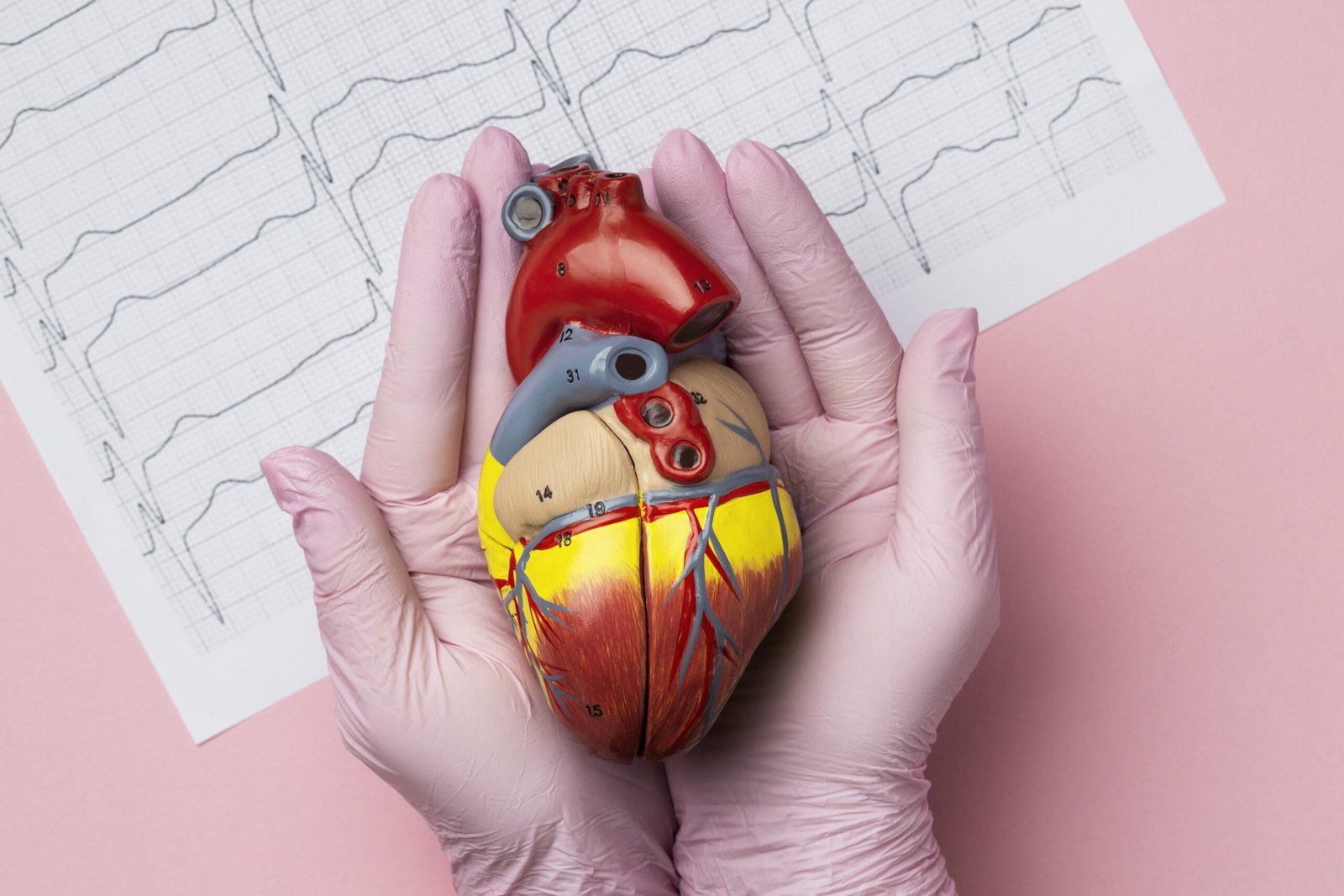Cardiovascular Disease: Understanding the Leading Cause of Death Worldwide
Table of Contents
Introduction
Cardiovascular disease (CVD) is a term used to describe a range of conditions that affect the heart and blood vessels, including coronary artery disease, stroke, and heart failure. CVD is the leading cause of death globally, responsible for approximately 17.9 million deaths each year, according to the World Health Organization (WHO).
CVD encompasses a variety of disorders that can damage the heart and blood vessels, often leading to serious complications and significantly impacting quality of life. Understanding the risk factors, symptoms, and treatment options for CVD is crucial for reducing the burden of this disease and improving overall health outcomes.
In this article, we will explore the concept of cardiovascular disease, its historical perspective, variations, incidence, demographic data, symptoms, treatment options, prevention strategies, and conclude with the importance of raising awareness and taking proactive steps to address this global health challenge.
Concept of Cardiovascular Disease
Cardiovascular disease (CVD) is a broad term that encompasses a range of conditions affecting the heart and blood vessels. The most common types of CVD include coronary artery disease (CAD), stroke, and heart failure. These conditions can be caused by a variety of factors, including atherosclerosis, hypertension, diabetes, and lifestyle factors such as smoking, unhealthy diet, and lack of physical activity.
Atherosclerosis, a condition characterized by the buildup of plaque in the arteries, is a major cause of CVD. Plaque buildup narrows the arteries, restricting blood flow to the heart, brain, and other organs. This can lead to serious complications, including heart attack, stroke, and peripheral artery disease.
Other forms of CVD, such as heart failure, occur when the heart is unable to pump enough blood to meet the body’s needs. This can be caused by damage to the heart muscle from a heart attack, high blood pressure, or other conditions.
Understanding the concept of cardiovascular disease is important for recognizing the risk factors and taking steps to prevent and manage these conditions. By adopting a healthy lifestyle, including regular exercise, a balanced diet, and avoiding tobacco use, individuals can reduce their risk of developing CVD and improve their overall health and well-being.
Variations of Cardiovascular Disease
Cardiovascular disease (CVD) can manifest in various forms, each with its own set of symptoms, risk factors, and complications. Understanding these variations is crucial for accurate diagnosis and effective management. Some of the most common variations of CVD include:
- Coronary Artery Disease (CAD): CAD is the most common type of heart disease and occurs when the coronary arteries, which supply blood to the heart muscle, become narrowed or blocked. This can lead to chest pain (angina), heart attack, and heart failure.
- Stroke: Stroke occurs when the blood supply to part of the brain is interrupted or reduced, depriving brain tissue of oxygen and nutrients. This can result in brain damage or death. There are two main types of stroke: ischemic stroke, caused by a blocked artery, and hemorrhagic stroke, caused by a ruptured blood vessel.
- Heart Failure: Heart failure occurs when the heart is unable to pump enough blood to meet the body’s needs. This can result from conditions such as CAD, high blood pressure, or cardiomyopathy. Symptoms of heart failure include shortness of breath, fatigue, and swelling in the legs and abdomen.
- Peripheral Arterial Disease (PAD): PAD occurs when there is a buildup of plaque in the arteries that supply blood to the limbs, usually the legs. This can lead to reduced blood flow, causing symptoms such as leg pain, numbness, and non-healing wounds.
- Aortic Aneurysm: An aortic aneurysm is a bulge in the wall of the aorta, the body’s largest artery. If an aneurysm ruptures, it can cause life-threatening internal bleeding. Aortic aneurysms are often caused by atherosclerosis.
- Arrhythmias: Arrhythmias are abnormalities in the heart’s rhythm, which can cause the heart to beat too quickly, too slowly, or irregularly. Some arrhythmias are harmless, but others can be life-threatening.
- Valvular Heart Disease: Valvular heart disease occurs when one or more of the heart’s valves do not work properly. This can result in blood flowing backward through the valve or not flowing efficiently, leading to symptoms such as chest pain, fatigue, and shortness of breath.
- Congenital Heart Disease: Congenital heart disease is a term used to describe a range of heart defects that are present at birth. These defects can affect the heart’s structure and function, leading to a variety of symptoms and complications.
- Cardiomyopathy: Cardiomyopathy is a disease of the heart muscle that can lead to heart failure. It can be caused by a variety of factors, including genetics, infections, and certain medications.
Understanding the different variations of cardiovascular disease is essential for early detection, effective treatment, and improved outcomes. By recognizing the signs and symptoms of CVD, individuals can take proactive steps to reduce their risk and improve their heart health.
Historical Perspective of Cardiovascular Disease
The history of cardiovascular disease (CVD) dates back centuries, with evidence of heart-related conditions found in ancient Egyptian mummies. However, it was not until the 20th century that significant advancements were made in understanding and treating CVD.
One of the earliest recorded observations of heart disease dates back to around 1600 BCE, when an ancient Egyptian papyrus described symptoms of what is believed to be angina. Ancient Greek and Roman physicians also made contributions to the understanding of heart-related conditions, although their knowledge was limited by the lack of modern medical technology.
In the 17th century, English physician William Harvey made groundbreaking discoveries about the circulation of blood in the body, laying the foundation for our modern understanding of the cardiovascular system. Harvey’s work paved the way for further advancements in the study of heart disease.
In the 20th century, researchers began to uncover the risk factors for CVD, including high cholesterol, high blood pressure, and smoking. This led to the development of preventive measures such as dietary changes, exercise programs, and medications to reduce cholesterol and blood pressure.
One of the most significant milestones in the history of CVD was the development of open-heart surgery in the 1950s. This revolutionary procedure allowed surgeons to repair damaged heart valves and correct other structural defects, saving countless lives.
Since then, advancements in medical technology have continued to improve the diagnosis and treatment of CVD. Today, researchers are exploring new treatments, such as gene therapy and stem cell therapy, to further improve outcomes for patients with CVD.
Overall, the historical perspective of cardiovascular disease highlights the progress that has been made in understanding and treating this complex condition. While much has been achieved, there is still much to learn about CVD, and researchers continue to work towards new discoveries that will further improve the lives of those affected by this disease.
Incidence and Demographic Data of Cardiovascular Disease
Cardiovascular disease (CVD) is a global health concern, affecting people of all ages and demographics. According to the World Health Organization (WHO), CVD is the leading cause of death worldwide, accounting for approximately 17.9 million deaths annually.
Incidence rates of CVD vary significantly depending on geographic location, socioeconomic status, and other factors. Low- and middle-income countries bear the highest burden of CVD, accounting for over three-quarters of all CVD-related deaths. This disparity is often attributed to limited access to healthcare, poor nutrition, and higher rates of smoking and other risk factors in these regions.
In high-income countries, CVD remains a major cause of morbidity and mortality, particularly among older adults. Men are generally at higher risk of developing CVD at a younger age than women, although the risk for women increases after menopause.
Certain demographic factors, such as race and ethnicity, can also impact the incidence of CVD. For example, African Americans have a higher risk of developing CVD compared to other racial and ethnic groups in the United States. This disparity is believed to be due to a combination of genetic, environmental, and socioeconomic factors.
Overall, the incidence of CVD is influenced by a complex interplay of factors, including age, gender, race, ethnicity, and socioeconomic status. Understanding these demographic trends is crucial for developing targeted interventions to reduce the burden of CVD and improve outcomes for those affected by this disease.
Symptoms of Cardiovascular Disease
Cardiovascular disease (CVD) can manifest in a variety of ways, and symptoms may vary depending on the specific condition and its severity. Common symptoms of CVD include:
- Chest Pain or Discomfort (Angina): Angina is a common symptom of coronary artery disease (CAD) and is often described as a feeling of pressure, squeezing, fullness, or pain in the chest. It may also be felt in the shoulders, arms, neck, jaw, or back.
- Shortness of Breath: Shortness of breath, or dyspnea, can occur with various types of CVD, including heart failure, CAD, and peripheral artery disease (PAD). It may occur during physical activity or at rest and may be accompanied by other symptoms such as fatigue or dizziness.
- Fatigue: Fatigue is a common symptom of heart failure and occurs when the heart is unable to pump enough blood to meet the body’s needs. It can also be a symptom of other forms of CVD, such as CAD or arrhythmias.
- Dizziness or Lightheadedness: Dizziness or lightheadedness can occur with CVD, particularly when standing up quickly or exerting oneself. It may be a sign of inadequate blood flow to the brain.
- Swelling in the Legs, Ankles, or Abdomen: Swelling, also known as edema, can occur with heart failure or other conditions that cause fluid retention. It may be particularly noticeable in the legs, ankles, or abdomen.
- Palpitations: Palpitations are sensations of a rapid, irregular, or pounding heartbeat. They can occur with arrhythmias or other heart conditions.
- Nausea, Indigestion, or Stomach Pain: These symptoms can occur with angina or heart attack, particularly in women. They may be mistaken for indigestion or other gastrointestinal issues.
- Sweating: Unexplained sweating, particularly when accompanied by other symptoms such as chest pain or shortness of breath, can be a sign of a heart attack.
It is important to note that symptoms of CVD can vary widely from person to person, and some individuals may experience no symptoms at all. Additionally, symptoms may come and go or may be more pronounced during certain activities or times of stress. If you experience any symptoms of CVD, it is important to seek medical attention promptly.
Treatment of Cardiovascular Disease
The treatment of cardiovascular disease (CVD) aims to reduce symptoms, prevent complications, and improve overall heart health. The specific treatment plan will depend on the type and severity of the condition, as well as individual factors such as age, overall health, and lifestyle. Treatment options for CVD may include:
- Lifestyle Changes: Adopting a heart-healthy lifestyle is an essential part of managing CVD. This includes eating a balanced diet low in saturated fats, cholesterol, and sodium; exercising regularly; maintaining a healthy weight; and avoiding tobacco use.
- Medications: Medications may be prescribed to manage symptoms and reduce the risk of complications. Common medications for CVD include:
- Cholesterol-lowering medications: Such as statins to reduce the buildup of plaque in the arteries.
- Blood pressure medications: To lower high blood pressure and reduce the risk of heart attack and stroke.
- Antiplatelet medications: Such as aspirin to reduce the risk of blood clots.
- Beta-blockers: To reduce the heart’s workload and lower blood pressure.
- ACE inhibitors: To help relax blood vessels and lower blood pressure.
- Surgery or Procedures: In some cases, surgery or procedures may be necessary to treat CVD. Common procedures include:
- Angioplasty and stent placement: To open blocked or narrowed arteries.
- Coronary artery bypass surgery: To bypass blocked arteries and improve blood flow to the heart.
- Heart valve repair or replacement: To repair or replace damaged heart valves.
- Cardiac Rehabilitation: Cardiac rehabilitation programs can help improve heart health and overall well-being. These programs typically include exercise training, education on heart-healthy living, and counseling to reduce stress and improve mental health.
- Implantable Devices: In some cases, implantable devices such as pacemakers or defibrillators may be recommended to help regulate the heart’s rhythm or prevent sudden cardiac death.
- Heart Transplant: In severe cases of heart failure or other conditions, a heart transplant may be necessary.
It is important for individuals with CVD to work closely with their healthcare team to develop a comprehensive treatment plan that addresses their specific needs and goals. Regular follow-up appointments and monitoring are also essential to ensure that treatment is effective and to prevent complications.
Prevention of Cardiovascular Disease
Prevention plays a crucial role in reducing the risk of developing cardiovascular disease (CVD) and improving overall heart health. Many of the same lifestyle changes that are recommended for managing CVD are also effective for prevention. These include:
- Healthy Diet: Eating a balanced diet rich in fruits, vegetables, whole grains, and lean proteins can help lower the risk of CVD. Limiting saturated fats, trans fats, cholesterol, and sodium is also important.
- Regular Exercise: Engaging in regular physical activity can help improve cardiovascular fitness, lower blood pressure and cholesterol levels, and maintain a healthy weight. Aim for at least 150 minutes of moderate-intensity aerobic exercise or 75 minutes of vigorous-intensity aerobic exercise each week, along with muscle-strengthening exercises on two or more days a week.
- Maintain a Healthy Weight: Being overweight or obese can increase the risk of CVD. Achieving and maintaining a healthy weight can help reduce this risk.
- Quit Smoking: Smoking is a major risk factor for CVD. Quitting smoking can significantly reduce the risk of developing CVD and improve overall health.
- Limit Alcohol Consumption: Excessive alcohol consumption can increase the risk of CVD. Limiting alcohol intake to moderate levels (up to one drink per day for women and up to two drinks per day for men) can help reduce this risk.
- Manage Stress: Chronic stress can contribute to the development of CVD. Finding healthy ways to manage stress, such as meditation, yoga, or talking to a counselor, can help improve heart health.
- Get Regular Health Screenings: Regular health screenings can help detect risk factors for CVD, such as high blood pressure, high cholesterol, and diabetes, early on. This allows for early intervention and management of these conditions.
- Follow Your Doctor’s Recommendations: If you have been diagnosed with risk factors for CVD, such as high blood pressure or high cholesterol, it is important to follow your doctor’s recommendations for treatment and management.
By adopting a heart-healthy lifestyle and working with your healthcare team to manage risk factors, you can significantly reduce your risk of developing cardiovascular disease and improve your overall health and well-being.
Conclusion
Cardiovascular disease (CVD) remains a significant global health challenge, responsible for millions of deaths each year. However, much progress has been made in understanding and treating CVD, leading to improved outcomes for many patients.
Prevention plays a crucial role in reducing the risk of developing CVD. By adopting a heart-healthy lifestyle, including a balanced diet, regular exercise, and avoiding tobacco use, individuals can significantly reduce their risk of developing CVD and improve their overall health.
It is also important for individuals with CVD risk factors or a family history of CVD to undergo regular health screenings and follow their healthcare provider’s recommendations for treatment and management. Early detection and intervention can help prevent the progression of CVD and reduce the risk of complications.
This article has provided an overview of CVD, including its concept, historical perspective, variations, incidence, demographic data, symptoms, treatment options, prevention strategies, and the importance of seeking professional help. However, it is essential to remember that this article is for informational purposes only and should not replace regular visits to a healthcare professional or the performance of necessary medical tests. Regular check-ups and consultations with a healthcare provider are crucial for maintaining heart health and overall well-being.
If you’re interested in learning about the 10 Most Common Diseases Affecting Humans Worldwide, click HERE.




